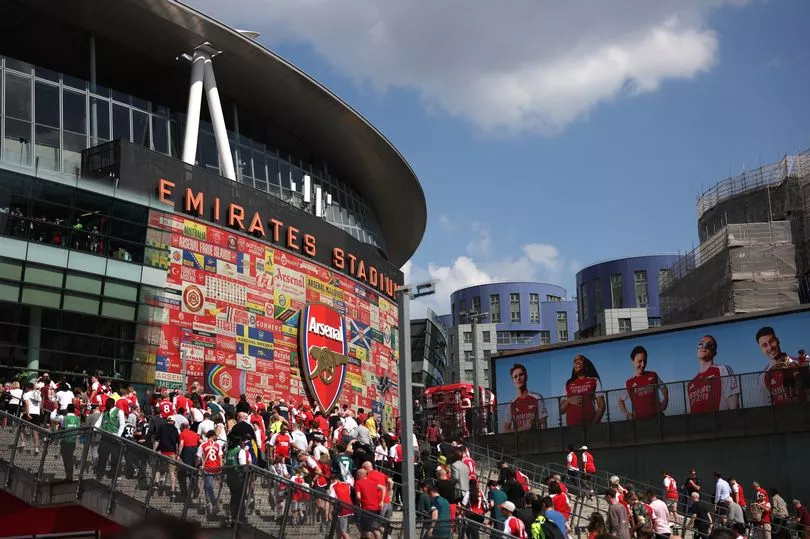On Monday it was revealed that Arsenal were seeking to expand their 60,700-seater Emirates Stadium home in a bid to maximise match-day income.
A report in the Times claimed that the club had started to explore how they could ‘upgrade and expand’ the Emirates, their home since 2006, with the club hierarchy wanting to act in a timely fashion at a time when the club has returned itself to the elite group of perennial title challengers and Champions League qualifiers.
Success on the pitch has delivered greater financial returns, and the next set of accounts for the 2023/24 financial year, expected to be made public in early 2025, is forecast by analysts at Off the Pitch to see record revenue levels and a return to profitability for the first time in seven years.
The challenge for Arsenal, particularly after having spent a large part of the last decade on the outside looking in, falling away from the title chatter on an annual basis and missing out on the chance to grow revenues at a hugely lucrative time for Premier League clubs, with the likes of Manchester City, Liverpool, and even Tottenham Hotspur capitalising on the opportunity, is that revenues still fall short of their title rivals.
Of the so-called ‘big six’, Arsenal had the smallest revenue in 2022/23 (£465m), behind Chelsea (£512m), Spurs (£550m), Liverpool (£594m), Manchester United (£648m), and Manchester City (£713m). The Gunners’ revenue trend since 2019 stood at 18%, some way behind the 33% that Manchester City had seen.
Driving forward commercial revenues has been a target for the club, and that will only be aided further by a continued presence near the summit of the Premier League and a regular berth in the Champions League. Brands want visibility and kudos through being associated with success, and that is something that can have a major impact on the Gunners in terms of getting money into the coffers.
In terms of matchday income, Arsenal earned £102.6m last season, which was an increase from the £79.4m they made for the 2021/22 accounting period.
While the figure places Arsenal third on the list for the 2022/23 accounting period, behind Spurs (£118m) and Manchester United (£136m), the expansion of Liverpool’s Anfield Road End to take the capacity to 61,000 means that they are likely to be in the £100m-plus club by the time the 2024/25 financial results arrive. Manchester City are looking to expand the Etihad, while Chelsea have plans to change their situation long-term through the development of Stamford Bridge.
Arsenal’s matchday revenue growth over the last 10 years has been steady, up 11% since 2013. However, a look at some of their direct rivals shows how much ground has been made on the Gunners, who had the second-highest matchday revenue figure in 2013 at £93m, behind only Manchester United. Over the decade, United’s matchday revenue has grown 25%, Liverpool’s has risen 79%, Manchester City’s is up 82%, and Spurs’ new stadium build has seen them deliver a 193% rise compared to where their figures stood 10 years ago.



